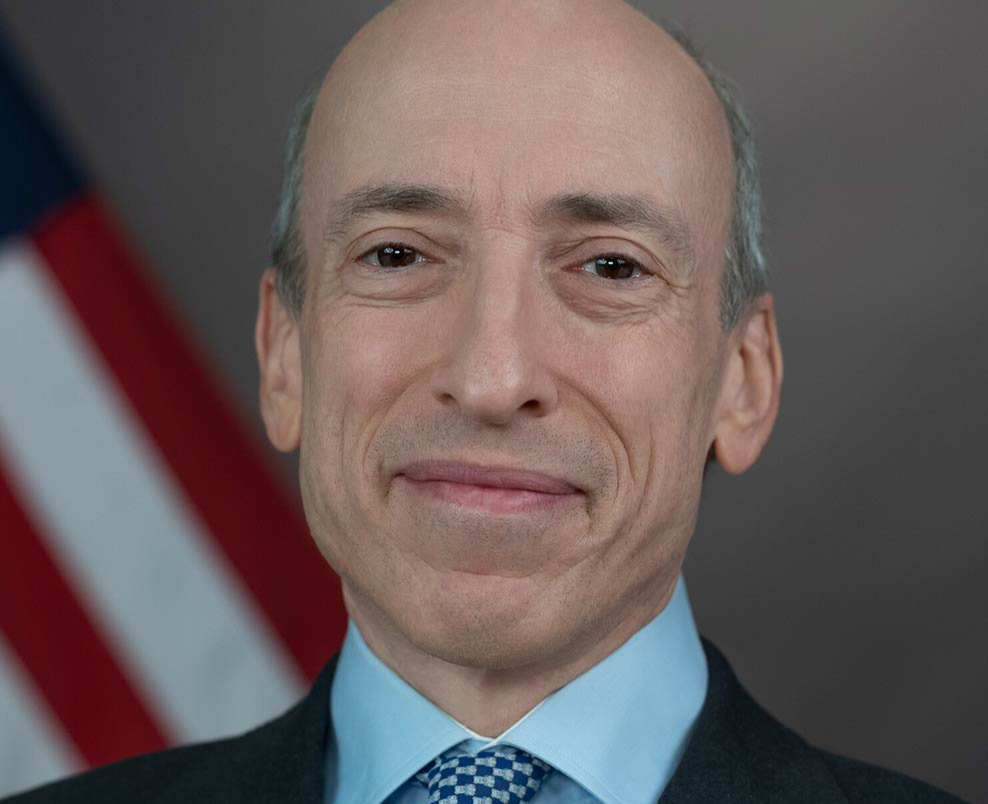Executive
The SEC’s Climate Disclosure Rule Is a Dark Cloud Over Energy Abundance
The SEC’s climate disclosure rule does not serve investors and serves instead to diminish the supply of energy for the country.

The Securities and Exchange Commission (SEC) climate disclosure rule posts real problems for public companies. The SEC’s mission is to do facilitate capital formation and maintain market efficiency, but for the first time in its 90-year history, the SEC has injected political risk factors into its traditionally principles-based disclosure framework.
The climate rule is a left-wing idea
Leading up to the new rule, the SEC buckled under pressure from left-wing special interests to impose the first environmental disclosure mandate on public companies. If the SEC’s final rule is allowed to go into effect by the courts, it will be a financial disaster for the public markets.
My latest policy report illustrates many of the ways that U.S. firms will suffer under the SEC’s climate rule. The report was published on the same day the RealClearFoundation hosted its 2024 Energy Future Forum, where the SEC’s excessive overreach on climate policy was a point of contention.
The climate rule will require most large and mid-sized public firms to report annual and quarterly disclosures that account for an endless range of climate risk factors. This translates to approximately 3,488 firms spending upwards of $628 million on direct disclosure costs and millions on indirect costs.
Consequentially, firms will need to expend great resources hiring climate scientists, ESG experts, lawyers, and accountants to properly prepare their disclosures for SEC review, neglecting the time normally spent on enhancing their market value.
Corporate boards will lose much of their discretionary decision making, forced to prioritize environmental risk factors over purely financial concerns. In its place, corporate boards must infuse speculative climate science to determine which climate risks warrant inclusion in their SEC disclosure.
Confusing and contradictory data
With the SEC’s 12 new climate disclosure categories, investors will be spammed with a flood of confusing and potentially contradictory environmental data. This will undermine the ability of investors to navigate the actual meaningful risks in the markets or assess the health of a company. The doom and gloom of climate risks will imperil sensible financial analysis.
But now the SEC has run headlong into a hostile legal environment, facing multiple lawsuits from a host of disgruntled organizations and concerned investors seeking to prevent the rule’s implementation. As many as 25 state attorneys general have pursued two lawsuits against the SEC for exceeding its statutory authority and violating the major questions doctrine by promulgating climate regulation.
The Eighth Circuit Court of Appeals was chosen by the Judicial Panel on Multidistrict Litigation to consolidate nine challenges into one case against the SEC. Soon after, the SEC halted the rule’s implantation to fend off its legal challenges.
The SEC is in the unenviable position of trying to defend the indefensible.
The SEC lacks any legislative authority to enforce its climate disclosure rule. In 1976, the SEC provided minimal updates to corporate disclosure requirements to reflect new environmental laws like the 1969 National Environmental Policy Act (NEPA). This was so that companies could adhere to NEPA’s standards in their annual SEC filings and report executive expenditures.
This is in stark contrast with today’s climate rule, which was imposed with no proper regard to the democratic will of Congress.
Assuming an authority on climate Congress does not have
Proponents of the climate rule rely on loose interpretations of Section 12 of the Securities Act of 1934 and Section 7 of the Securities Act of 1933 to wrongfully assume that Congress granted it broad authority for setting disclosure criteria.
RealClearFoundation’s recent Energy Future Forum challenged the financial shakiness and investor detriment posed by ESG disclosures like the SEC’s.
During the “capital (mis)allocation” session featuring Terrence Keeley (see the video embedded above to see his part), Chairman and CEO of 1PointSix, he raised the issue over how the SEC’s rule is backdoor environmental activism writ large. Mandatory climate disclosures represent an undemocratic form of ESG policymaking that neither Congress nor the U.S. electorate actually approved.
“There are a number of decisions that society needs to make in regard to the environment. Those things need to be made democratically,” Keeley said, “not by some self-appointed elite at the Securities and ‘Emissions’ Commission that has decided in a backway [manner] that we’ve got to do this about Scope 3 emissions. That’s just not the way to make decisions. And it’s going to unfortunately be a road to less abundance, less energy independence, and less energy cleanliness ultimately.”
Most ESG disclosures do not serve their (ostensible) purpose
In response to the notion of the SEC’s serving the best interest of investors by forcing companies to disclose their climate risks, Keeley mentions that most ESG fund disclosures do not justify their purpose or meet their environmental impact. The SEC’s rule would do nothing to rectify the lack of positive environmental impact emanating from ESG funds or ESG-oriented companies.
“None of them [ESG funds] make any claim to have any impact,” Keeley asserts. “All it is trying to do is beat the MSCI index, which by itself, was created to further this ESG industrial complex. And it’s not achieving its goals.”
Keeley and I both make clear that the SEC’s rule will artificially infuse environmental consciousness into the corporate board’s decisions. This undermines their discretion to conduct proper risk management for the company.
Additionally, the greenhouse gas disclosure will provide ample informational ammunition to climate activists, who will use this as leverage to “coerce them into adopting costly decarbonization targets,” Keeley explains.
The SEC’s finalized climate disclosure rule represents the greatest regulatory detriment to corporate freedom in the agency’s history. If the rule were to survive litigation or congressional intervention, many investors would suffer from lower returns and higher prices for goods and services. The last thing investors need is costly climate disclosure spam masquerading as corporate transparency.
This article was originally published by RealClearEnergy and made available via RealClearWire.
Stone Washington is a research fellow at the Competitive Enterprise Institute.
-

 Civilization4 days ago
Civilization4 days agoDC Pipe Bomb Arrest Raises Questions About Christopher’s Wray’s FBI
-

 Civilization5 days ago
Civilization5 days agoThe Legal Logic Behind U.S. Operations Against Narco-Terrorist Networks
-

 Executive5 days ago
Executive5 days agoNewsom’s ‘National Model’ for Homeless Wracked by Fraud
-

 Executive4 days ago
Executive4 days agoWhen You’re in a Hole, Stop Digging
-

 Education3 days ago
Education3 days agoWaste of the Day: Taxpayers Subsidize Football Coach Severance
-

 Executive2 days ago
Executive2 days agoWaste of the Day: Obamacare Failed Test, Approved Fraudulent Subsidies
-

 Civilization3 days ago
Civilization3 days agoPence Calls on Trump To Fire RFK Jr Over Abortion Drug
-

 Executive4 days ago
Executive4 days agoWaste of the Day: Feds Pay Nonprofits That Sue the Government










